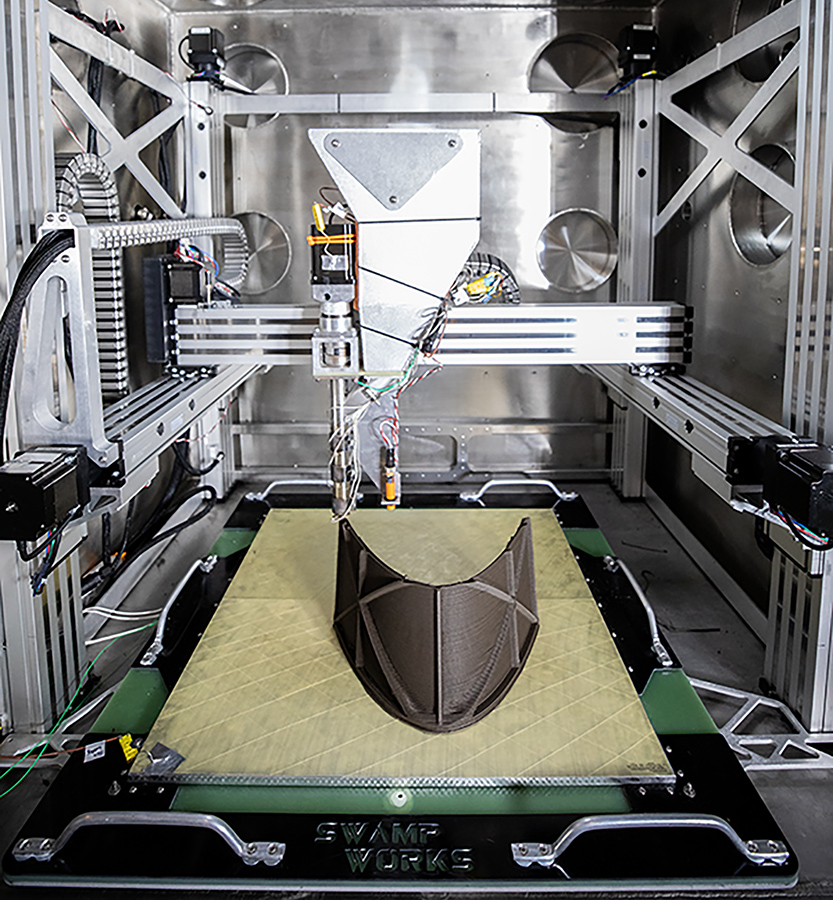Stay Up to Date
Submit your email address to receive the latest industry and Aerospace America news.
The Space Resources Technical Committee advocates affordable, sustainable human space exploration using nonterrestrial natural resources to supply propulsion, power, life-support consumables and manufacturing materials.
Lunar resource exploration missions made several advances in 2023. In June, a prototype of NASA’s Volatiles Investigating Polar Exploration Rover, or VIPER, completed egress tests from a model of a Griffin lander built by Astrobotic Technology of Pennsylvania. Griffin is scheduled to land VIPER on the lunar south pole in late 2024, where the rover will search for ice and other potential resources. The tests, conducted with the VIPER prototype Moon Gravitation Representative Unit 3 at NASA’s Ames Research Center in California, demonstrated the rover’s ability to traverse the lander ramp over a range of conditions. In August, after two decades of effort, Honeybee Robotics in California delivered avionics packages and two 1-meter-class TRIDENTs, The Regolith and Ice Drill for Exploring New Terrain, to Intuitive Machines of Texas and NASA’s Johnson Space Center in Texas. One TRIDENT will be ferried to the lunar surface aboard an Intuitive Machines Nova-C lander for the Polar Resources Ice Mining Experiment-1 mission; the other will be installed on VIPER. Onboard PRIME-1, TRIDENT will collect subsurface regolith for analysis by a mass spectrometer.
In September, NASA announced that the Mars Oxygen In-Situ Resource Utilization Experiment completed its mission on Mars. MOXIE, aboard the Perseverance rover, produced molecular oxygen 16 times over one Martian year of operations under a variety of conditions. Production was consistently 12 grams per hour, double the mission goal. MOXIE demonstrated valuable lessons on how to operate the system on Mars, according to Michael Hecht, the project’s principal investigator. Future scaled-up MOXIE systems could produce oxygen for rocket propellant and astronaut consumption, reducing the need to bring theses consumables from Earth.
In March, NASA announced the winners of the Lunar Forge Challenge. Seven university teams won a combined $1.1 million in awards as part of the NASA Breakthrough, Innovative and Game-Changing Idea Challenge. Teams will compete to develop a variety of concepts for technologies needed in the lunar metal production pipeline.
This year, teams completed Phase 2 of the NASA Break the Ice Lunar Challenge, in which they developed their systems and demonstrated their operation in a 15-day endurance test. NASA plans to announce the winners by the end of the year. The top teams for Phase 2a were announced in December 2022. Fifteen teams were selected to compete for a chance to win prizes totaling $3.5 million.
In February, Blue Origin of Washington announced the results of its Blue Alchemist project, a technology demonstration to produce solar cells from lunar regolith simulants. Via molten regolith electrolysis, a reactor produced iron, silicon and aluminum. The silicon- and regolith-derived glass are then used to make solar cells. Regolith-derived aluminum is used for transmission wire. Blue Origin believes this technology will make a long-term human lunar presence viable by producing abundant electrical power.
In March, AI Space Factory of New Jersey, in collaboration with Swamp Works at NASA’s Kennedy Space Center in Florida, completed the Regolith Additive Construction Technology demonstration. They 3D printed a scaled lunar outpost LINA in a vacuum from a mixture of regolith and polymer. The printed structure was engineered to withstand lunar conditions and support a regolith radiation shield.
In March, the EPE and Lunar Outpost Oceania Consortium and the Australian Remote Operations for Space and Earth received grants of 4 million Australian dollars ($2.6 million) under the Australian Space Agency’s Moon to Mars: Trailblazer program, which with NASA is working toward the first end-to-end space resources demonstration on the moon. The organizations are to create a rover to autonomously collect and transfer lunar regolith to a NASA processing facility that would extract oxygen from the regolith.
Contributors: Michael Hecht, Kevin Hubbard, Joseph Kendrick, Julie Kleinhenz, Jared Long-Fox, Laurent Sibille and Kris Zacny
Stay Up to Date
Submit your email address to receive the latest industry and Aerospace America news.




